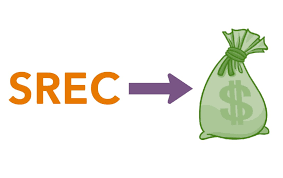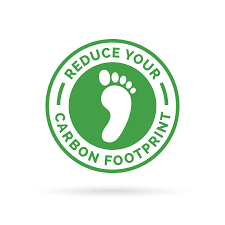The Environmental Protection Agency (EPA) introduced renewable energy credits to determine which entities have and have not consumed clean energy.
The system has a few somewhat complicated aspects, so let’s start by answering some of the most common questions about renewable energy credits.
What Are Renewable Energy Credits?
Before we answer what renewable energy credits are, we should give you some background information. When electricity producers make energy, they send it to the USA’s grid system.

Once the electrons that constitute electricity are in the grid, we cannot determine[1] whether or not the electricity producer made the electricity using clean or dirty methods.
That’s where renewable energy credits come in. When a producer makes renewable energy, they create two separate commodities[2]—the electricity ad the renewable energy credit. These two commodities are entirely separate and can be sold together or individually.
According to the EPA[3], a renewable energy credit is “a market-based instrument that represents the property rights to the environmental, social and other non-power attributes of renewable electricity generation.”
Essentially, that means energy producers and consumers can buy and sell the positive externalities that come about when producers create renewable energy.
When a producer sells the renewable energy credits separate from the energy itself, we call this an “unbundled” renewable energy credit. In contrast, one sold with the energy is a bundled renewable energy credit.
Why Are Renewable Energy Credits Useful?
Renewable energy credits are the only form of certification that the US government accepts for the generation and consumption of renewable energy.
That means even if you produce hundreds of megawatts of electricity with solar panels on your property, you won’t get renewable energy credits unless you’re certified to do so.
Renewable energy credits help the government track which entities use clean electricity and which don’t. As stated before, once electrons are flowing in the grid, we have no way of knowing whether the electricity came from wind farms or a coal-burning power plant.
By tracking the sale of renewable energy credits, the government can easily see which entities use clean power.
Since public concern over dirty energy sources is becoming more acute, companies or other entities that buy these credits can benefit from the excellent PR, aside from the real benefit of reducing overall CO2 emissions.
Why Do Companies Want Renewable Energy Credits?
Companies usually want renewable energy credits for one of two reasons—to reduce their overall carbon footprint or to make money on the renewable energy credit market. Let’s go through both of these reasons.
Reducing Carbon Footprint

When a company purchases a renewable energy credit, they have bought the right to say they performed their operations with clean energy.
So, suppose a company’s monthly electricity use amounts to 10,000 megawatts, and they purchase renewable energy credits amounting to 10,000 megawatts. In that case, they can claim they operate using 100% clean energy.
Companies covet the ability to say they use 100% clean energy. Not only does it mean their operations are having a net-zero effect on the environment, but they can attract customers who worry about the environmental impacts of industry.
Some companies are also unable to install renewable energy-producing capabilities.
Instead of spending their money on installing productive capacity, these companies can purchase renewable energy credits that give them the same result—knowing they are using clean energy.
Renewable Energy Credit Market
As we know, renewable electricity producers can sell their renewable energy credits to any buyer. That means a solar panel operator could sell their credits to Shell or Exxon Mobil so those companies can claim to be reducing their carbon footprint.
But it’s not just producers who can sell their renewable energy credits. Any company that holds a renewable energy credit can sell it to another company. That means when the demand for renewable energy credits is high, companies can make money on the renewable energy credit market.
This is a strategy that has worked for a few companies, most notably Tesla. Tesla is an odd case, though. They not only buy and sell renewable energy credits, but they also produce them with their large solar arrays at their factories.
By selling these credits when their prices rise, Tesla has been able to post impressive quarterly numbers[4].
Can I Produce and Sell Renewable Energy Credits?
The most common way to produce renewable energy on your property for individuals or small businesses is to install solar panels. Solar panels can fit seamlessly onto any home or business and provide it with a cost-saving feature.
But if you’re producing renewable energy this or any other way, can you claim any renewable energy credits?
According to the EPA[5], you can only claim to use renewable energy if you own the renewable energy credit, so you must get your credits certified to claim you use clean electricity.
Suppose you have solar panels on your property, and you own them outright. In that case, you can claim a particular type of renewable energy credit called a solar renewable energy certificate (SREC).
If you have solar panels but leased them, the solar panel lessor either entirely or partially owns the SREC’s.
For those who produce solar energy, an SREC acts the same as a renewable energy credit. It can be sold to another party, but then the producer can no longer claim to use renewable energy in their operations.
The producer can also use the electricity. As long as they still hold the credit, they can claim to be using renewable electricity.
Wrapping Up
Renewable energy credits are fundamental ways the US government encourages businesses and energy producers to use and make clean energy. Without the renewable energy credits, there wouldn’t be a separate commodity aside from electricity.
Having a secondary market for renewable energy credits makes it a valuable tool to encourage using clean electricity.
The most important aspect of owning the renewable energy credit, the ability to say you use clean electricity, isn’t just good for the environment, but good for your company’s public image as well.

